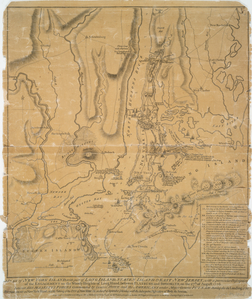Fair Use
As you’re working on your various assignments, you may find yourself incorporating materials readily available on the Internet in your own work, whether it be images, music or video. While you are welcome to utilize the resources available on the Internet, it is important that your work adheres to fair use guidelines. Use of copyrighted materials generally falls under fair use if they are used for educational purposes. However, you must provide clear citations of all the sources you include in your work. Just as you would not want others to pass off your work as their own, intentionally or otherwise, you should also observe good citation practices when it comes to incorporating someone else’s work in yours.
*****
Citing Online Images
If you’re using an image that you have not created, it is important that you cite the source appropriately. When you’ve found an image you’d like to use, note down the following information:
Title of image (if any)
Creator of image (if known)
Creation date (if known)
Location of image (if known)
Name of website
Date you accessed the image.
URL
Create a citation, one that adheres to the stipulations of the citation style your professor would like you to follow. The citation should be placed in a visible place. If you have a “References,” “Bibliography,” or “Works Cited” section on your website, be sure to include images you use in the list. Always include the image title and creator next to the image. Where possible, create a link to the website from where the image was obtained. See example below. If you’re using the image in a movie, include a citation as a text caption.
Example:
Note that the image is a link to the New York Public Library site from which the map is obtained.
Image title: A plan of New York Island, with part of Long Island, Staten Island & east New Jersey : with a particular description of the engagement on the woody heights of Long Island, between Flatbush and Brooklyn, on the 27th of August 1776 between His Majesty’s forces commanded by General Howe and the Americans under Major General Putnam, shewing also the landing of the British Army on New-York Island, and the taking of the city of New-York &c. on the 15th of September following, with the subsequent disposition of both the armies / engraved & publish’d by … Wm. Faden. (Oct 19, 1776).
Creator: Faden, William, 1750?-1836 — Engraver
*****
Using Music in Web-Published Videos
You may have heard that “Youtube now mutes videos with unauthorized copyrighted music.” Clearly, this will effect your movie editing choices as you decide on what soundtrack you want to accompany your video footage.
You may have also heard that it’s okay to use copyrighted music as long as you limit it to 30 seconds. However, whether it’s a firm okay is subject to debate, as there is no hard and fast 30-second rule. Your best bet is to familiarize yourself with what constitutes fair use and exercise good judgment when incorporating music (or video footage) created by someone else. The Center for Social Media has published a Code for Best Practices in Fair Use for Online Video, a resource I highly recommend you read before making online videos.
As with images, you should also cite the sound recordings that you use. Note down the following information of your sound recording and provide an accompanying citation:
Artist name (Note down composer and performer where relevant)
Song title
Recording manufacturer
Medium (e.g. MP4).

